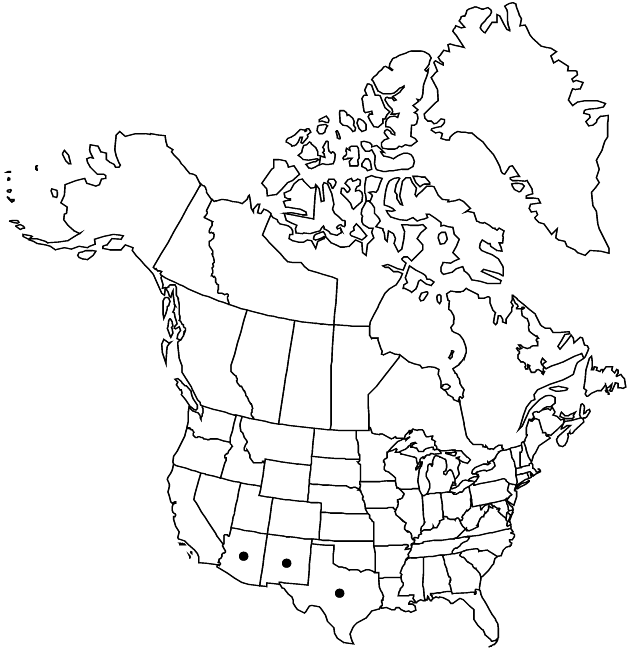Baccharis pteronioides
in A. P. de Candolle and A. L. P. P. de Candolle, Prodr. 5: 410. 1836.
Shrubs, 30–100 cm (diffusely and evenly branched with thick woody crowns). Stems erect, terete, brittle, slightly striate, scabrous, stipitate-glandular, papillose-roughened. Leaves cauline (proximal withering before flowering, distal crowded in gascicles); sessile; blades linear to lanceolate or spatulate, 5–25 × 1–6 mm (stiff, coriaceous to fleshy), bases attenuate, margins sharply serrate (teeth 1–5 pairs, distal leaves often entire), faces glabrous, gland-dotted, resinous. Heads (10–20+ on densely leafy lateral branchlets) in spreading racemiform arrays. Involucres campanulate; staminate 4–5 mm, pistillate 5–6(–7) mm. Phyllaries ovate to lanceolate, 1–5 mm, margins scarious, medians green, apices acute to acuminate, glabrous. Staminate florets 15–20; corollas 4–5 mm. Pistillate florets 15–20; corollas 4–5 mm. Cypselae 1.8–3 mm, 8–10-nerved, minutely papillose-glandular; pappi 8–10 mm (bristles rigid).
Phenology: Flowering Apr–Jun.
Habitat: Dry canyons, roadsides, open oak woodlands, grasslands
Elevation: 300–2000 m
Distribution

Ariz., N.Mex., Tex., Mexico.
Discussion
Baccharis pteronioides is characterized by its shrubby stiff habit, rough gray bark, branches that are evenly spaced and often at 45° angles, fascicles of narrow sessile leaves, and heads in racemiform arrays on short leafy branches. The Mexican common name yerba de pasmo refers to an infusion of the leaves used to treat chills (pasmo) and sores; the plants are also said to be poisonous to cattle and sheep.
Selected References
None.